|
|
Missile Command
|
Name:
|
Missile Command |
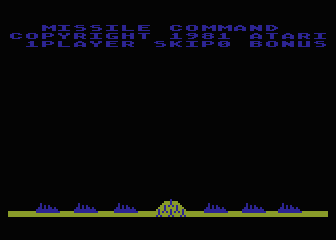 |
| Company: | Atari | |
|
Model #:
|
CXL-4012 | |
|
Programmer:
|
Rob Zdybel | |
| Year: | 1981 | |
|
Released?
|
Yes
|
|
|
Notes:
|
Port of the 1980
Atari Coin-Op |
One of Atari's most beloved classics, Missile Command was almost deemed too scary for the general public. The original plot was supposed to feature a missile attack on California, but this idea was scrapped due to fears of the game causing a mass panic (this was during the Cold War after all). Programmer Dave Theurer actually woke up in cold sweats due to the nightmares he had about nuclear war after working on this project. In the end the location was made generic, and the name was changed from Armageddon (meaning the end of the world) to a more subdued Missile Command.
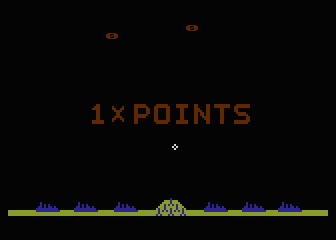
The concept of Missile Command is simple. Shoot down all the incoming missiles before they hit your bases. You start each wave with 30 antiballistic missiles (ABMs) which you must launch at the incoming nuclear warheads. Each ABM will explode into a ring of fire when it reaches its target. It's this explosion that you must use to destroy the enemy warheads. If any missiles strike your cities they will be destroyed (one city is replaced every 10,000 points), and if a missile strikes your base you will lose any missiles currently inside and have to wait until the base is restored before you can shoot again. Thankfully the enemy can only destroy up to three cities on each wave, so if you've got four or more cities you'll always be able to continue to the next level no matter how disastrous things turn out.
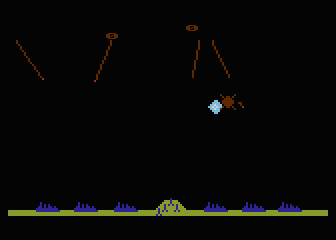
It's not just enemy missiles that you have to worry
about, each stage features killer satellites and bombers which
will slowly move across the screen launching MIRVs (Multiple
Independent Re-entry Vehicles) which will branch out quickly from
a low altitude and decimate your cities if you're not
careful. Make taking these out a a priority before they're
able to launch. On higher levels you'll start encountering
Smart Missiles which will actively seek out your bases and are apt
at avoiding your ABMs. If you don't score a close hit on a
Smart Missile it will simply bounce off the explosion and keep
coming. You can turn on an option that will turn all
missiles into Smart Missiles by pressing the S key on the title
screen. This mode is good for practicing against Smart
Missiles or making the game very VERY difficult.
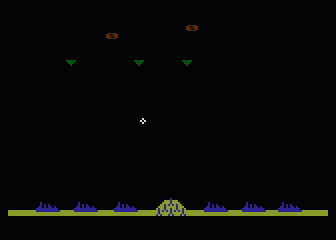
The Atari 8-bit version of Missile Command is very close to its arcade counterpart with one exception, the player only has one base! Even though the Atari 8-Bits could have handled all three bases,the Atari joystick only had one fire button so the extra bases had to go. Rob had considered using the keyboard for the extra bases, but this was deemed to be too difficult for the player to manage. While most hardcore arcade junkies were dismayed with this change, many players found it easier to only have to worry about one base instead of three. Interestingly Rob hid a Trak-Ball mode in the game so players could truly mimic the arcade experience (press Control-T). However since the Trak-Ball was still in development at the time, this is not mentioned in the instruction manual.
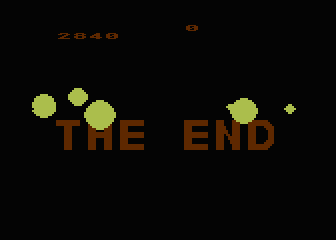
The Atari 8-Bit version of Missile Command plays darn near the exact same as the arcade game. While losing two of the three bases takes away a little of the arcade difficulty (defending one base is much easier than three), it doesn't hurt the gameplay as much as you'd think. Interestingly Missile Command was chosen as the built-in game on the Atari XEGS system (start the computer with no keyboard attached and no game in the cartridge slot). While not a bad game for a freebie, Missile Command was badly showing its age in 1987 and probably didn't impress anyone. This version was actually slightly modified in order to fix the level skip feature which was broken on all XL/XE systems due to a table in the OS code being moved.
| Version | Cart Text | Description |
| ?/??/81 | Late beta |
